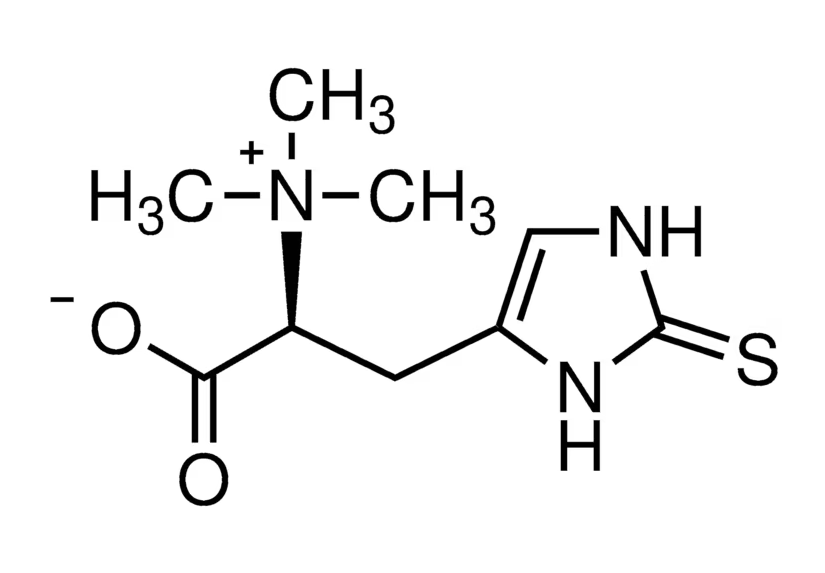Welcome to Nugene Pharma, a trusted global leader in the production, manufacturing, and supply of premium-quality L-(+)-Ergothioneine (EGT). As a key partner in the nutraceutical, pharmaceutical, and cosmeceutical industries, we are committed to delivering scientifically validated, high-performance ingredients that drive innovation and promote health.
At Nugene Pharma, we harness advanced biotechnology and rigorous quality assurance to produce L-(+)-Ergothioneine, a naturally occurring amino acid derivative celebrated for its unparalleled antioxidant properties, cellular protection, and anti-aging benefits. Our cutting-edge production facilities and sustainable practices ensure that every batch meets the highest global standards for purity, bioavailability, and safety.
Catering to a wide range of clients—including dietary supplement manufacturers, skincare brands, pharmaceutical developers, and research institutions—we take pride in our reliability, scalability, and customer-centric approach. Whether you need bulk raw materials, custom formulations, or seamless supply chain solutions, our expert team is dedicated to delivering excellence at every stage.
Partner with Nugene Pharma to leverage our scientific expertise, global distribution network, and unwavering commitment to quality. Together, we pioneer next-generation health solutions that make a lasting impact.
Product Name: L-(+)-Ergothioneine
Synonyms: 2-mercaptohistidine trimethyl betaine, Ergothioneine, Sympectothion, Thiasine, Thiolhistidine-betaine, Thioneine, (S)-α-Carboxy-N,N,N-trimethyl-2-mercapto-1H-imidazole-4-ethanaminium inner salt
CAS NO.: 497-30-3
EINECS NO.: 207-843-5
Quality Level: 200
Packing size: 5KG / 25KG
Storage condition: Keep container tightly closed in a dry and well-ventilated place
storage temp: −20°C
Chemical Structure

General description
L-(+)-Ergothioneine (ET) is a sulfur-containing amino acid, which is only produced by Actinomycetales bacteria and non-yeast like fungi belonging to the division Basidiomycota and Ascomycota. It was originally isolated from Claviceps purpurea or rye ergot. It is obtained from L-histidine, which is converted into betaine form called hercynine. It is found in both animals and plants, and mammals usually obtain it from their diet, e.g. through mushrooms or oats. It is tautomeric in nature, and in neutral aqueous solution exists in thione form.
Application
L-(+)-Ergothioneine is suitable for use in the study of its reactivity with 2,2′- and 4,4′-dipyridyl disulphide (2-Py-S-S-2-Py and 4-Py-S-S-4-Py). It may also be used for the incubation of experimental cells while performing in vitro kinase activity assays for ATM (Ataxia telangiectasia mutated) or ATR (ATM- and RAD3-related).
L-(+)-Ergothioneine has been used:
1. As a positive control in solute carrier protein 22 A4 (SLC22A4) transport assay.
2. As a component of the maturation medium for cumulus-oocyte complexes (COCs) to test protective function on lipid peroxide formation.
3. As an antioxidant compound to test type 2 diabetes patients.
Biochem/physiol Actions
L-(+)-Ergothioneine (ET) has the maximum concentrations in tissues subjected to oxidative stress, with the highest being in blood, eye lens, bone marrow, semen and liver. It acts as an anti-oxidant and prevents apoptosis, by scavenging reactive oxygen and nitrogen species. The anti-oxidant activity is attributable to sulfhydryl groups. It acts as a substrate for SLC22A4 (solute carrier family 22, member 4) transporter. In alveolar macrophages, it prevents the release of interleukin-8 (IL-8) by tumor necrosis factor (TNF)α. IL-8 is an inflammatory cytokine. It also regulates the oxidative damage in liver and kidneys, and has a protective action against lipid peroxidation. It is also responsible for the conservation of endogenous glutathione and α-tocopherol. ET being an antioxidant, protects against γ and UV radiation. In UV-irradiated human dermal fibroblasts, it scavenges reactive oxygen species (ROS), and suppresses matrix metalloproteinases 1 (MMP1) expression. It might also have anti-ageing effects on skin caused by UV-radiation.
Other Notes
Natural amino acid found in the fungus Claviceps purpurea.

